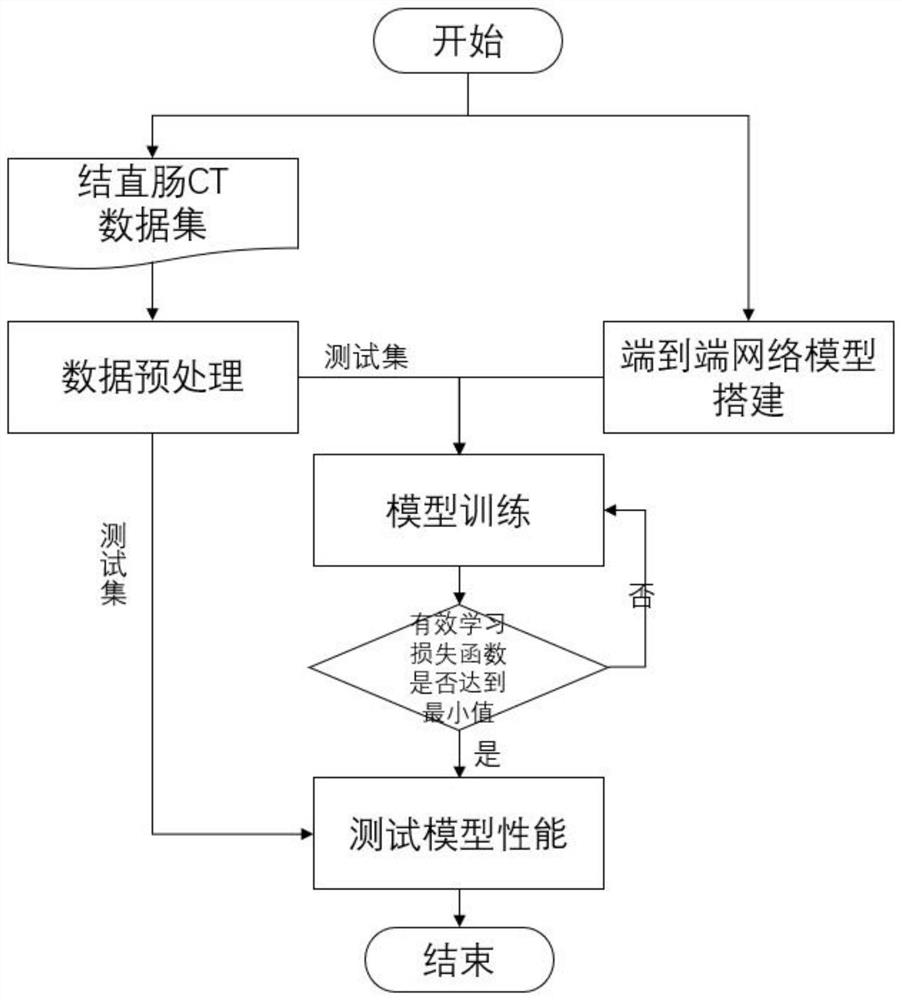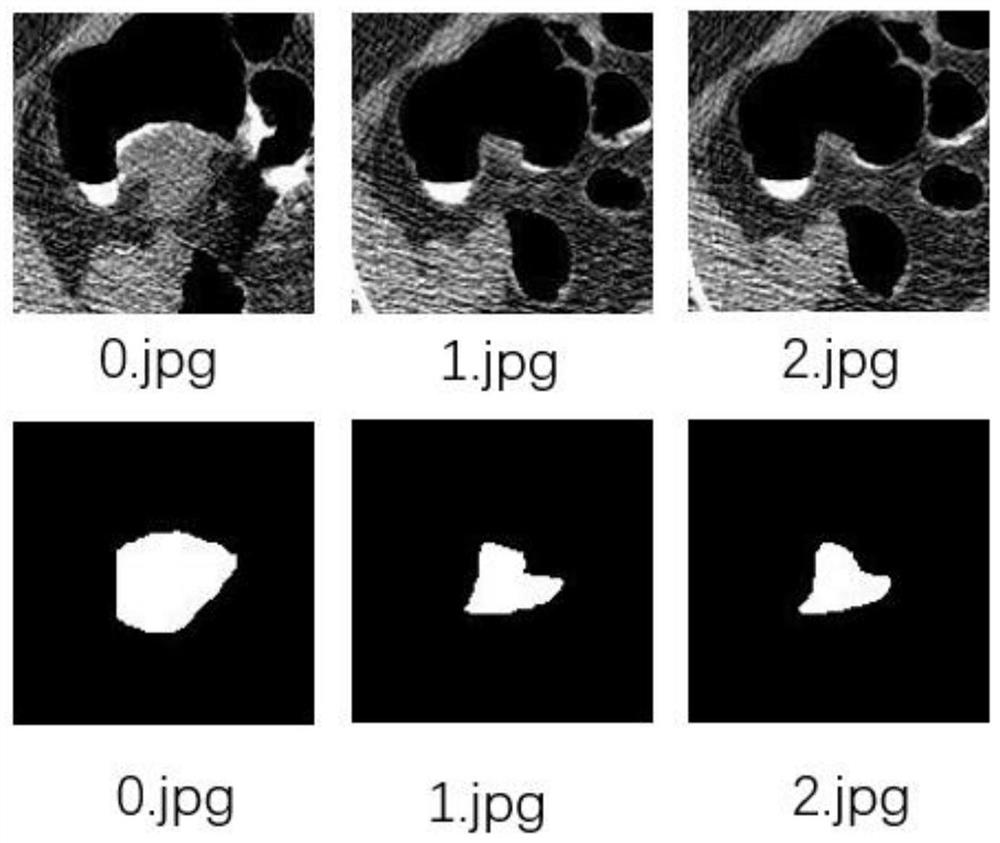End-to-end colorectal polyp image segmentation method based on effective learning
A colorectal and polyp technology, applied in image analysis, image enhancement, image data processing, etc., can solve problems such as uneven proportion of foreground and background areas, irregular edges, etc., to reduce manual intervention, improve attention, The effect of increasing attention
- Summary
- Abstract
- Description
- Claims
- Application Information
AI Technical Summary
Problems solved by technology
Method used
Image
Examples
Embodiment Construction
[0031] The specific implementation of the end-to-end colorectal polyp segmentation method based on effective learning in the present invention uses an end-to-end network model as a tool for colorectal polyp segmentation, wherein the feature extraction process and classification process are integrated without manual combination. The images of 104 patients with confirmed colonic polyps were used as model training data. After data processing, 545 images of 650 CT images were divided into training set (for model fitting) and test set (for model fitting) according to the ratio of 9:1. The remaining 105 images are used as a test set (used to evaluate the generalization ability of the model).
[0032] In this example:
[0033] The original colorectal CT image data containing polyps in step 1 contains a lot of irrelevant information, and the proportion of polyps is too small compared to the entire CT image. After observation and practice, polyp segmentation is a local operation, whic...
PUM
 Login to View More
Login to View More Abstract
Description
Claims
Application Information
 Login to View More
Login to View More - R&D
- Intellectual Property
- Life Sciences
- Materials
- Tech Scout
- Unparalleled Data Quality
- Higher Quality Content
- 60% Fewer Hallucinations
Browse by: Latest US Patents, China's latest patents, Technical Efficacy Thesaurus, Application Domain, Technology Topic, Popular Technical Reports.
© 2025 PatSnap. All rights reserved.Legal|Privacy policy|Modern Slavery Act Transparency Statement|Sitemap|About US| Contact US: help@patsnap.com



